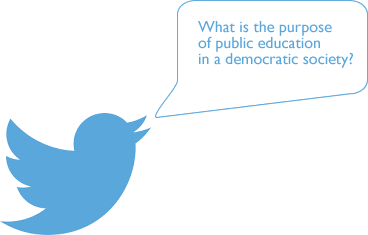Tuesday night I was at an award ceremony for teachers. One of the teachers being honored was described as patient and kind. She described the teacher who inspired her to go into teaching also as being patient and kind.
That made me sit up and take notice.
Now I already know the two words students most often use to describe me—strict and fun. My fourth grade teacher Mrs. Hester was the first teacher who inspired me to become a teacher. She was a-MAY-zing. And the first two words I would use to describe her would be strict and fun.
Do we as teachers get imprinted by our first great teachers?
I started thinking about the next teachers who would come into the classrooms.
Right now I see two movements heading toward us on a collision course.
My principal was talking at lunch about the lack of substitute teachers and about how thin the pool of quality applicants there was for teaching positions right now. There is a shortage of teachers across the state of Washington. The problem goes beyond our state, which means we can’t look beyond our borders to find quick solutions. Nationally, enrollment in teacher training programs is down as much as 50%.
Governor Inslee’s new budget proposes lowering class sizes in kindergarten through third grade, which is a step in the right direction. Once those class sizes are lowered, there will be positions open across the state for K-3 teachers. If we actually lowered class sizes K-12, which is what the initiative mandates, that would require even more teachers.
It sounds like there will be a lot more jobs and not enough teachers.
That worries me.
It worries me because I don’t want districts scrambling to find teachers. I don’t just want warm bodies filling positions. Nobody wants that! We all want amazing teachers.
It frustrates me that salary is a negative issue, a reason people flock away from education as a career. I’ve watched college students check out which degrees pay well and choose their college programs accordingly.
You can look at the data yourself. Go to the graph of The College Degrees with the Highest Starting Salaries put out by Forbes. You won’t find an education degree anywhere on the list! Starting teacher salaries typically range from just under $31,000 to just over $34,000.
According to the Bellingham Herald, “Washington allocates about $34,000 for a first-year teacher, even though the state determined that it should pay about $52,000, to be competitive” (emphasis mine).
It concerns me that lack of respect is another negative issue driving people away from careers in education. How many of you have met people who hold teachers, especially public school teachers, in low regard?
The truth is everyone has gone through school, some sort of education. They carry that experience with them. It colors the way they look at education—and educators—the rest of their lives. If you can get them to realize that you are not the teacher they had, that your school is not the school they went to, that the curriculum you are teaching is not the same that they had to learn, that the whole experience is different now than it was 20 or 30 years ago, sometimes that’s where you can actually start a conversation.
So how can we draw students into the world of education in spite of the problems? How can we inspire the next generation of teachers?
I’m actively recruiting.
A boy in my class did his social studies CBA on the Berlin Wall. Well into his presentation, he suddenly asked, “How would you like it if your city was divided in half—like this?” And he took a roll of crepe paper, taped one end to the counter at the front of the room, and unrolling the paper, walked to the back of the room to tape the paper to a bookcase in the back. All eyes snapped to attention and followed his every move. “You,” he pointed, “are East Berlin and you,” he pointed, “are West Berlin.”
He went back to the front of the room and continued his presentation. As he described various escapes and escape attempts, student volunteers that he had prepared ahead of time acted out what he read. Students were enthralled.
At the end I called for our standard “Three Stars and A Wish.” There were more than three stars as the compliments poured in. There was no wish. No one had any suggestion for improvement. Then I said, “I have a wish.”
The class waited. What more could I possibly expect?
I said, “I wish you become a teacher.”
He smiled and nodded, and the class agreed. He would be an a-MAY-zing teacher.




